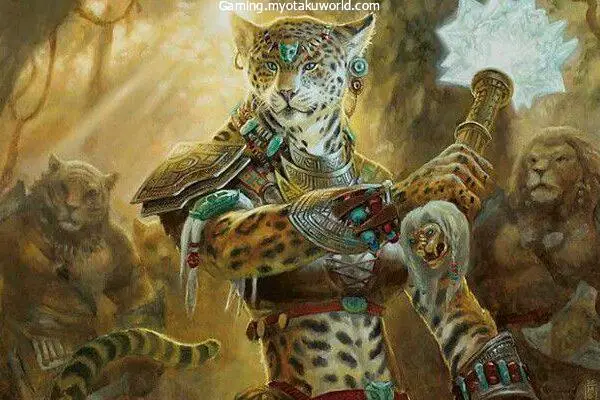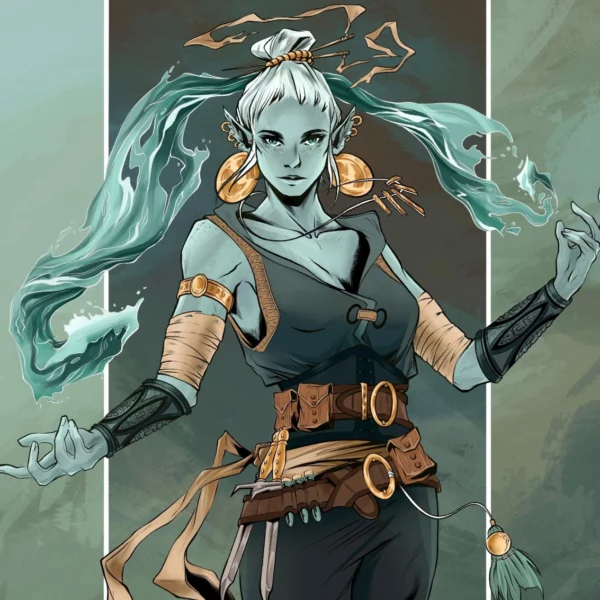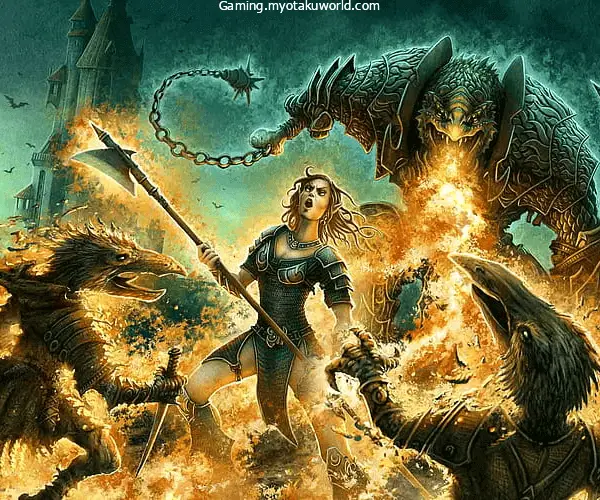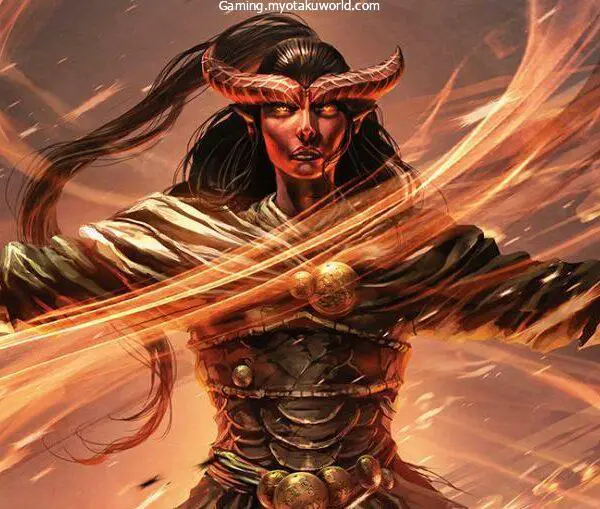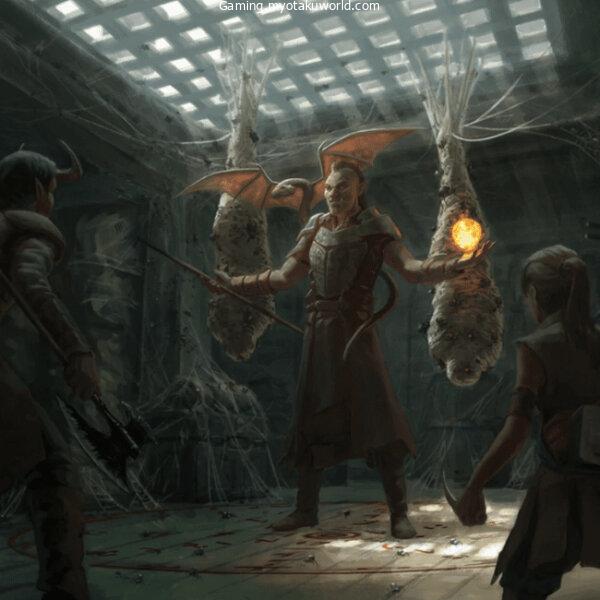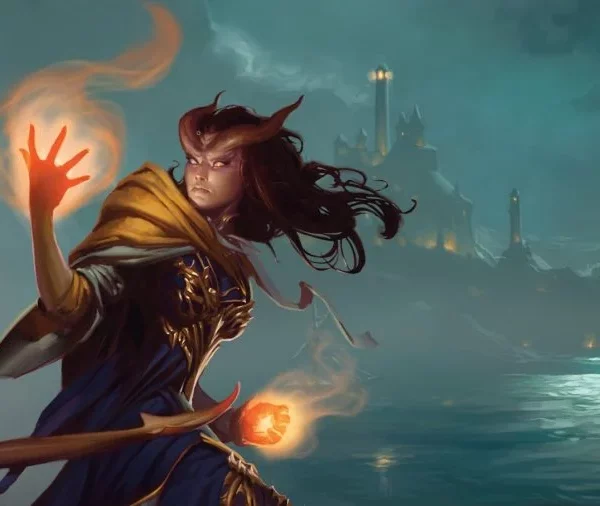Are they straight? Who would want them? It sounds dull to me. Choose a knife that can go around corners.
Ok, they can’t really attack around corners, but if you’re looking for a quick and stylish weapon, the scimitar should be your first choice.
I’ve played a lot of characters with scimitars, and I know a lot of other players who have too. It is almost always one of the best weapons in terms of how it works and how it looks.
If you’re good at describing what you’re doing and maybe even have a custom miniature, your character’s love of scimitars will be one of the most memorable things about them.
Even though people will always make Skyrim memes about Hammerfell, it’s a small price to pay for curved swords.
Swords. Curved.
Even if you don’t like jokes, the scimitar is a great weapon in D&D5e. Few people would argue with how well and stylishly a skilled swordsman swings a scimitar, which is small and useful.
Welcome to a scimitar 5e guide!
Summary
The scimitar is a martial close-combat weapon that cuts for 1d6 damage. Its fineness and lightness make it a great choice for dexterity-based characters, especially those who want to use two weapons at once. It weighs only 3lb and costs 25gp, which is a lot for a single-handed weapon.
Curved Swords Description
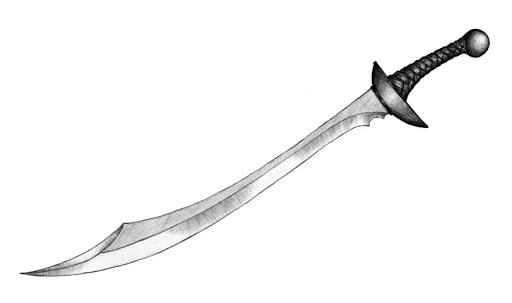
The scimitar is a type of backsword. It is a single-bladed sword that can only be held with one hand.
The side of the sword that doesn’t have a blade is thicker to make it stronger and more stable, and the blade is curved. Because of this curve, the scimitar is great for cutting but not so good for pushing.
The end of the sword was often wider and flatter so that the swing of the blade would be heavier and help it slice.
Even so, it is still lighter than most weapons. Other blades rely on brute force to do damage, but the scimitar makes up for its lack of weight by being made to attack weak spots in armor and important parts of the body.
Stat Block
For ease of reference, here are the general statistics you can expect from an average scimitar:
- Category: Weapon
- Weapon Type: Melee, Martial
- Rarity: Standard
- Damage: 1d6
- Damage Type: Slashing
- Properties: Finesse, Light
- Weight: 3lb.
- Cost: 25gp
Special Properties
Scimitars have a few unique qualities that you should keep in mind when you use them:
Finesse
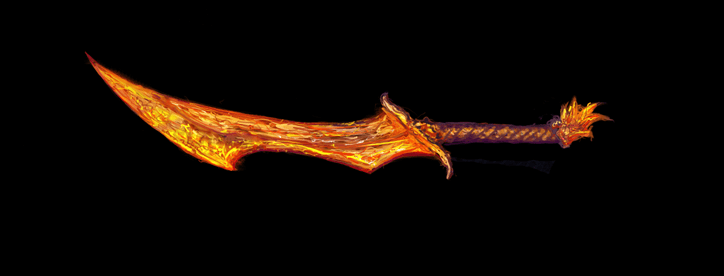
Finesse is one of, if not the most important property for a fighter based on dexterity. It lets the wielder use their dexterity modifier instead of their strength modifier when making attack and damage rolls.
They don’t have to make this switch; they can use their strength if they want to. However, they must choose the same can modifier for both rolls.
Most rangers and most rogues like finesse weapons, but anyone with a lot of dexterity can make good use of them.
Light
A light weapon can be used by two people at the same time. When it’s your turn, you can make two attacks if you have a melee weapon in each hand and both of them are light.
To do this, you use your action to attack with your main hand and a bonus action to attack with your other hand.
Taking on the task You can get around this rule by using Dual Wielder, which lets you fight with two weapons that aren’t light.
If your strength is higher than your dexterity, this feat looks appealing because it will let you use two battleaxes at once.
For those of us who would rather be nimble than strong, rapiers are a better choice. Using two of them at once sounds cool, but it costs a whole feat to do so.
Without it, oddly enough, two scimitars are one of the best ways to do damage with a finesse weapon.
Double-Bladed Scimitars
A double-ended scimitar is a less common type of the standard scimitar. The Valenar elves are known for their double-bladed scimitars, but anyone who wants to get in touch with their inner Darth Maul can use them, too.
Since it is basically two scimitars stuck together, it makes sense that it is twice as heavy as a normal scimitar, at 6lb. The same can’t be said about the price, which is a whopping four times higher at 100gp.
Even if you have a lot of money, you might never be able to buy one because they are so rare that you might be challenged to a duel if you are caught with one. Valenar elves often challenge non-elves who use the double-bladed scimitar because they think they are thieves who don’t deserve to use it.
All of this makes for interesting flavor text and history, but how well does the double-bladed scimitar work as a weapon? “Meh” is the resounding answer.
Choosing a scimitar with two blades is mostly a matter of taste. It’s not as sharp or light as a regular scimitar, and you have to use both hands to use it. It also does 2d4 damage when it slashes, which isn’t much better than the standard version. It’s not a bad weapon by any means, but if you could just use two scimitars, it wouldn’t be much better.
To make up for this, the double-bladed scimitar lets you attack as if you had two weapons in your hands. Like when you use two weapons at once, when you attack with a double-bladed scimitar as part of your attack action, you can use a bonus action to immediately make another melee attack.
But the second attack does less damage—1d4 slashes instead of 2d4—so there’s not much difference in damage compared to someone who just uses two scimitars. In both cases, the most damage you can do is 12, and the average amount of damage you do is 6.
The double-bladed scimitar is the only weapon in the game that has a special ability just for it. This ability is called “Revenant Blade,” and it is the only one of its kind. This seems pretty cool at first, but there’s a problem: this feat doesn’t give you anything you couldn’t get with two scimitars and other feats (more on this later).
Classes That Can Use Scimitars
Any class can use a scimitar if they take the Weapon Master feat, but these are the ones that are naturally good with them:
Barbarian
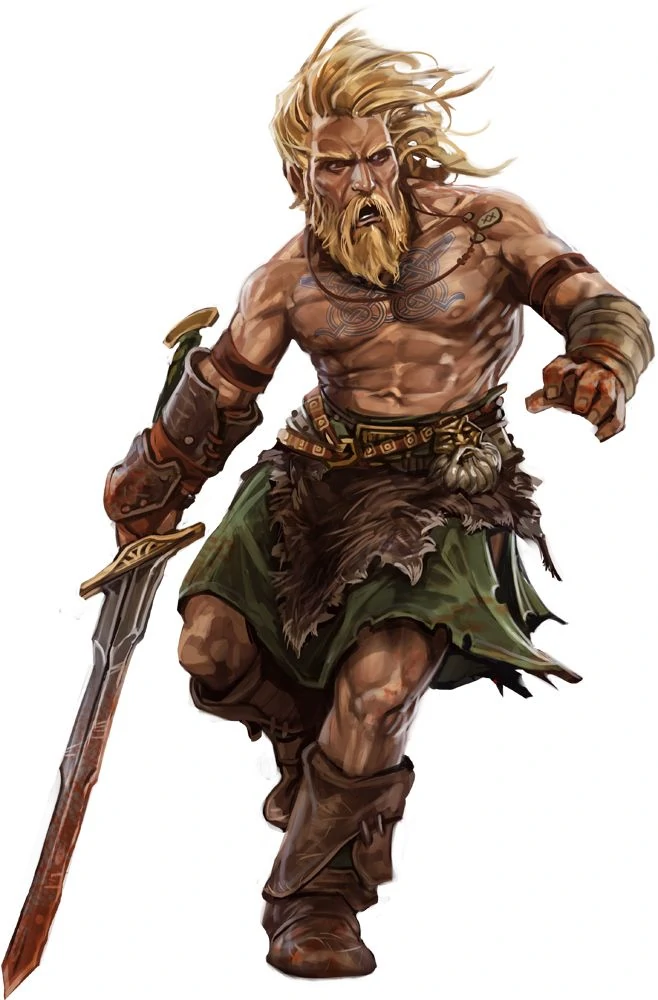
A barbarian could pick up a scimitar and chop up enemies if they wanted to, but it probably wouldn’t be the best choice. Focusing on dexterity won’t help them get the most out of their Rage ability, which gives them many bonuses based on their strength.
Still, it’s not impossible to make a barbarian an expert with scimitars, especially if they want to use two weapons at once. Their Danger Sense gives them a bonus on dexterity saving throws, and their Unarmed Defense adds up their dexterity and constitution modifiers to give them their AC.
Most barbarians don’t use shields, so if you don’t want to use a melee weapon in each hand, you should use a big, two-handed weapon instead.
Fighter
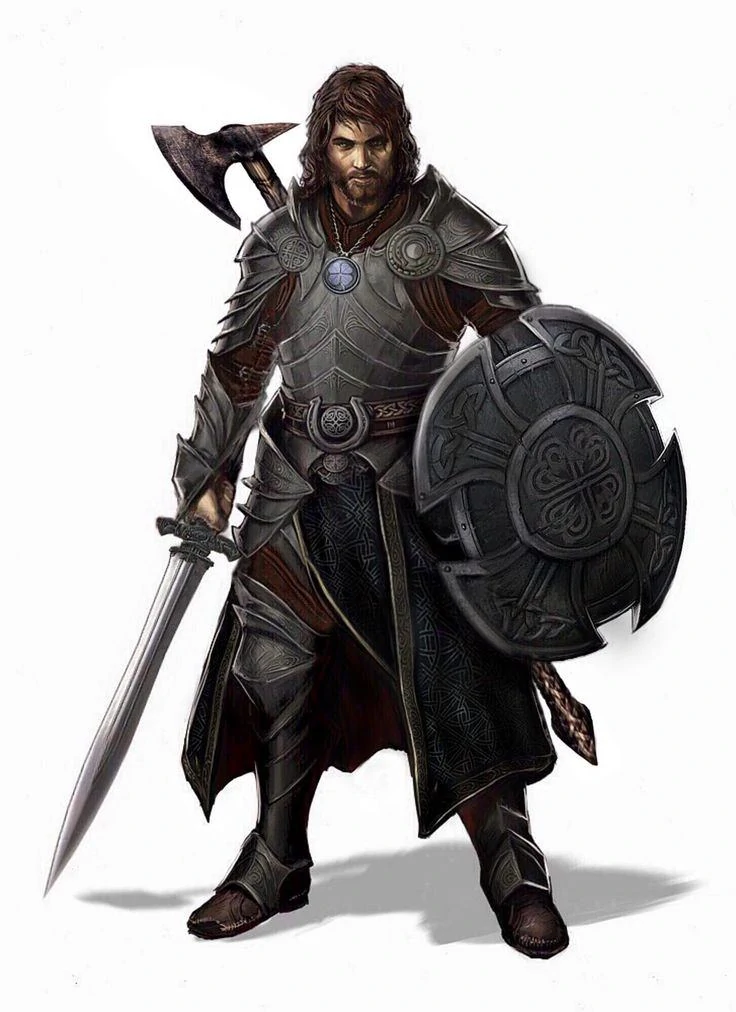
The scimitar is a great weapon for a fighter to use. With a good dexterity modifier, your attack and damage rolls will be great, and you’ll be able to use two weapons if you need to. It will also help raise your AC if you decide to wear medium or light armor.
Put on a shield to give yourself even more AC, and you’ll be hard to take down in the front lines. Dueling and Two-Weapon Fighting from the Fighting Style feature will help this type of fighter build a lot, so you should think about getting one of those.
Change the scimitar for the rapier if you never want to fight with two weapons and always want to use a shield. The rapier will do more damage. If you want to use your strength instead, a longsword, battleaxe, or warhammer will do more damage.
Ranger
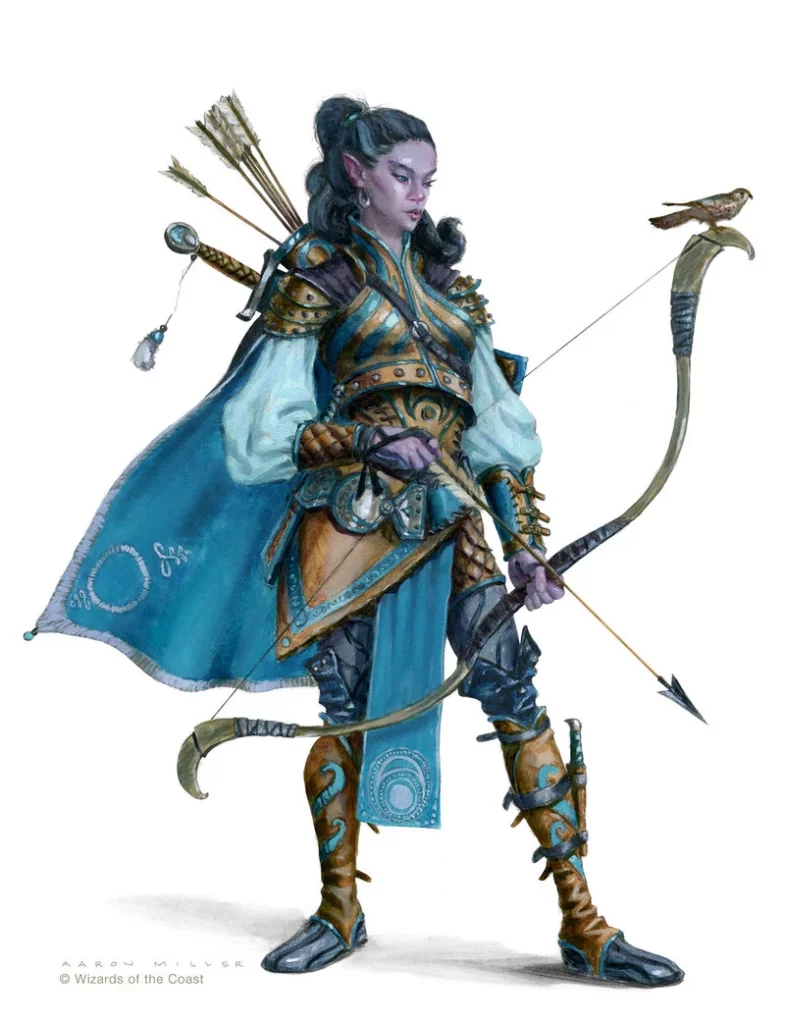
Who could think of the scimitar and not think of the ranger? The class is often thought of as a person with a bow across their back and a sword in each hand.
Putting points into dexterity is a great choice for a ranger because it helps their AC and makes their Hide In Plain Sight and Vanish abilities work better.
It’s also good for their bow attacks, so it makes sense to pair it with a close-quarters weapon that also depends on dexterity.
As with the fighter, the Fighting Style option gives you access to the Dueling and Two-Weapon Fighting options, which are great for scimitar users.
Paladin
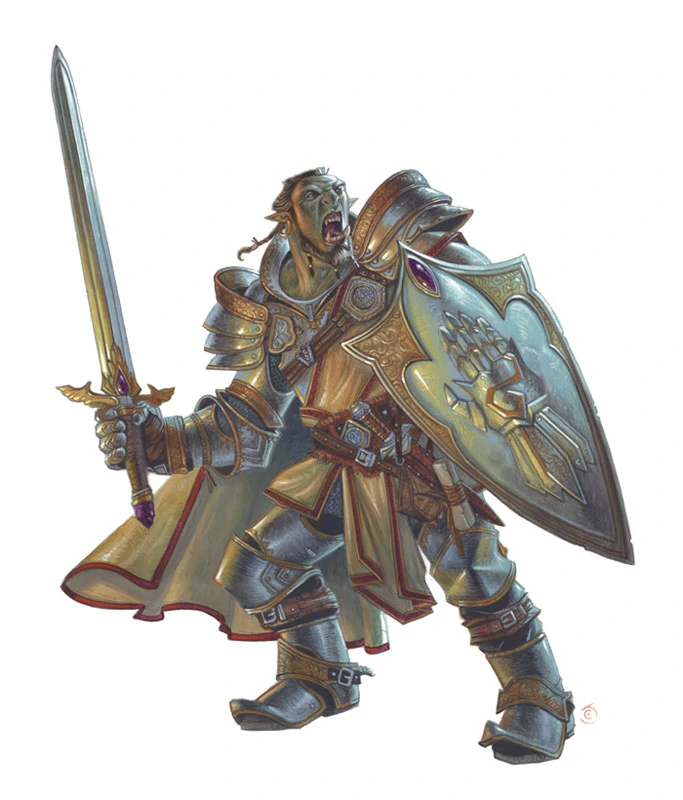
Paladins don’t have as much reason to work on their dexterity as other classes do, since they can use heavy armor and bludgeoning damage is better against undead, which is the typical enemy of paladins.
They can also put the focus of their spellcasting on their shield, which gives them more reason to use one weapon instead of two.
A paladin who specializes in scimitars is possible without making the class useless, but it’s far from the best choice. But it’s a pretty unique build, so it’s a good way to make a character that people will remember.
Again, this class has a feature called “Fighting Style.” The best options for scimitars are “Dueling” and “Two-Weapon Fighting” from that list.
Druid
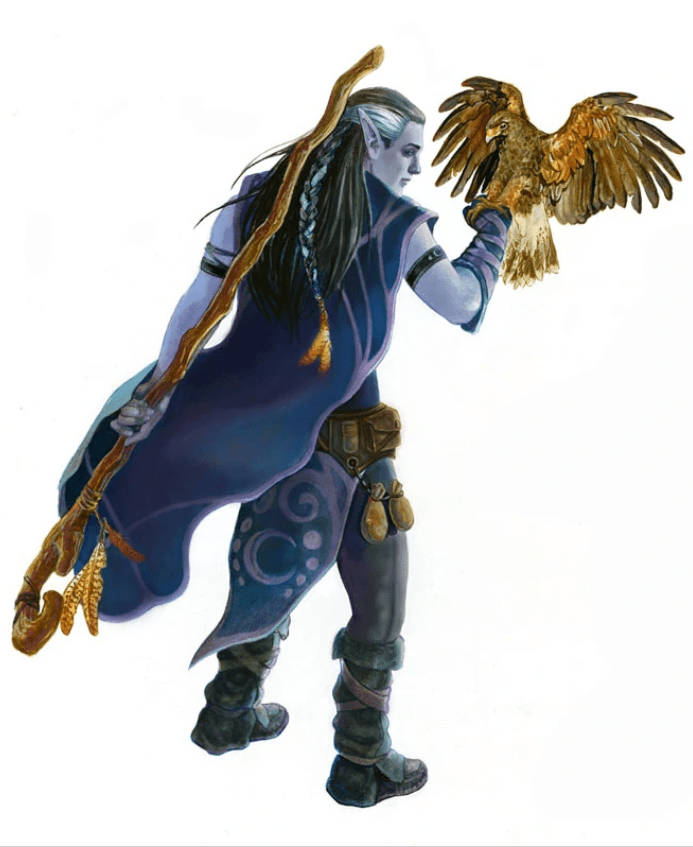
Even though druids don’t like anything metal, they are good with scimitars. This is not a martial skill, but a skill that only applies to scimitars. They can’t use shortswords or rapiers well, so scimitars are their only option for this type of weapon.
Druids often spend points on dexterity to improve their AC, and they need a free hand to cast spells. This makes scimitars a bit more useful for druids than for other classes.
Most of the time, druids will Wildshape into something better suited for close combat if they have to fight in melee, but it’s good to have a scimitar with you just in case.
Wizard (Bladesinger)
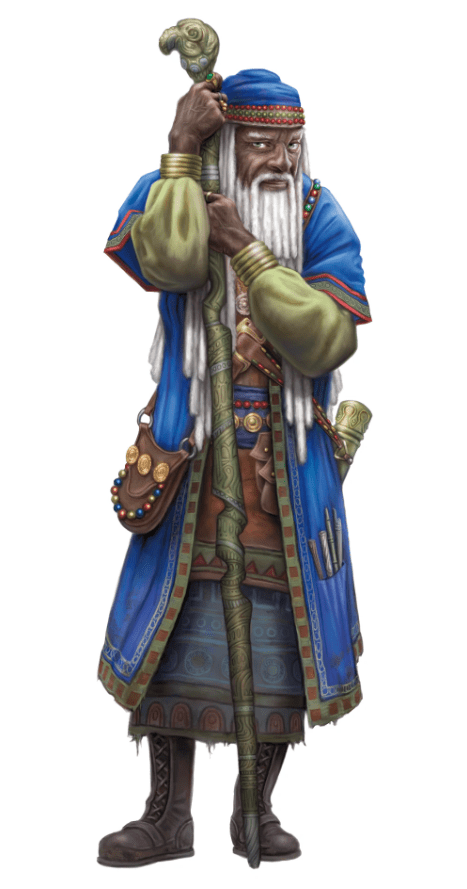
The scimitar is out of reach for most wizards because they can only use simple weapons. The Bladesinger, on the other hand, can get around this.
Their Training in War and Song subclass feature lets them use a single one-handed melee weapon well. This might be the scimitar, which is one of the best choices.
Bladesingers usually put dexterity over strength, and they can’t use shields without losing the benefits of their Bladesong ability, so it’s tempting for them to use two weapons at once.
Cleric (War/Tempest/Twilight Domain)
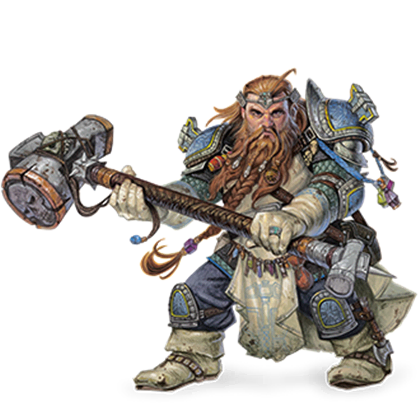
Most of the time, clerics can only use simple weapons, so the scimitar is out of their reach. But at level 1, the War, Tempest, and Twilight domains give bonus skills, one of which is with martial weapons.
The other one, on the other hand, has heavy armor, which makes you less likely to put as much into dexterity.
As a big fan of scimitars, it hurts me to say that even if you can, you should probably stay away from them here.
You’re much better off with a shield and a one-handed, strength-based weapon, like a warhammer, or dropping the shield for a big, two-handed weapon, like a maul.
Suggested Feats
There are a few things you can do with scimitars that work very well.
Here are just a few:
Slasher
This feat is good for any weapon that deals slashing damage because it lets you slow down anything you hit by 10 feet until the beginning of your next turn.
Also, anyone who takes a critical hit will now get a huge negative effect that gives them disadvantage on all their attack rolls and makes it hard for them to move.
Fighting Start (Duels/Fighting with Two Weapons)
Fighting Initiate is a great feat for a wide range of weapons because it gives them so many options. Depending on how the character plans to use the scimitar, two of these options can be helpful.
If you’re only using a scimitar and no other weapons, Dueling will give you a +2 bonus to your damage rolls.
But if you want to use a scimitar in each hand, Two-Weapon Fighting lets you add your ability modifier to the damage done by your offhand attack.
Duel Wielder
Check out this feat if you’re already getting Two-Weapon Fighting from Fighting Initiate. It makes it easier for you to use two different melee weapons at once by giving you +1 AC when you do so.
You can also draw two one-handed weapons in one turn instead of just one, so you don’t have to wait two turns to be fully armed.
This is great if you like double scimitars, but there’s another thing about it that might make you choose a different weapon: you no longer need the light property, so you can use any of the one-handed weapons in the game with both hands.
A fighter with a high dexterity might decide to switch to two rapiers instead of a scimitar because this boosts their damage from 1d6 slashing to 1d8 piercing.
Defensive Duelist
When a creature attacks you with a finesse weapon you know how to use, you can use your reaction to add your proficiency bonus to your AC.
This can turn a powerful hit into a total miss, which is great for people who don’t have enough hit points. Keep in mind that this costs your reaction, so if you already have other choices for your reaction, you might want to avoid this feat.
To get this feat, you must have a dexterity score of 13 or higher. If you already use finesse weapons, this shouldn’t be too much of a problem.
Revenant Blade (Elf Only)
This feat only works with the double-bladed scimitar; it has nothing to do with the standard version. It’s also only open to pure-blooded elves; even half-elves can’t take this feat. It makes the double-bladed scimitar have the finesse property and gives you +1 AC while you use it.
Smart readers will notice that this seems a lot like the Dual Wielder feat, but it might be worse. Even though I tend to agree, this feat gives you a free ability point that you can add to your strength or dexterity to make the deal a little sweeter.
The Dual Wielder feat also won’t help a person who uses a double-bladed scimitar, so if you’re an elf and want to use this weapon, get this feat instead.
Famous Scimitars
Not every scimitar is made the same. Some are bought from your local blacksmith after haggling over the price, while others are held up as shining examples of how to make a sword.
Here are some particularly excellent examples:
Ashram
Followers of Anhur made this +2 scimitar out of bronze. It has a gem set in its handle that gives off an eternal flame.
You could be forgiven for thinking that this stone is home to a fire elemental, but it’s actually a mysterious spirit.
The spirit’s powers keep the sword from getting hurt, even when it’s hit in a way that would break a similar blade.
The sword also does more fire damage to anything it hits. Ashram also protected the person who used it by making them immune to fire, thunder, and lightning.
Twinkle & Icingdeath
Drizzt Daermon N’a’shezbaernon, better known as Drizzt Do’Urden, is the most famous drow in all of Dungeons & Dragons who can use two weapons at the same time.
Drizzt used two really strong scimitars:
The one in his left hand was called Twinkle. It had a blue sapphire star on its handle that lit up when danger was close. It could feel what its user was feeling and use that to communicate with them.
Drizzt mostly used Twinkle as a defensive scimitar, deflecting attacks and making it easier for him to attack his opponents again.
The one in his right hand, Icingdeath, was his main weapon for fighting. The cat’s head was carved into the handle of this black adamantite scimitar. It had a silver blade with a diamond-shaped edge.
Icingdeath was a frostbrand weapon made to fight flame elementals and other fire creatures. In line with how it was made, it can absorb fire, protect its wielder from fire damage, and deal cold damage. This makes it perfect for fighting any creature that needs heat to live.
The Silver Scimitar Of Amahl the Mad
Amahl Shoon IV, who was the Qysar of the Shoon Imperium, owned this silver-plated scimitar. It was a dancing sword that Amahl’s Mastering could control from afar.
When these two artifacts are used together, the scimitar can move around on its own, flying through the air and slashing enemies while its owner relaxes at a safe distance.
Amahl wasn’t a very good swordsman, so this style of fighting fit him better than any other, maybe even more so after he went crazy.
The Hornblades Of Mielikki
Silvanus liked a huge hammer, but his daughter Mielikki liked a pair of scimitars better. Hartsong, her longbow, was The Supreme Ranger’s favorite weapon, but Hornblades became her favorite weapon for close combat.
The Hornblades look like pieces of a broken animal horn at first glance. But when a hidden button was pressed, curved blades shot out of the top and locked in place, turning them into powerful +5 scimitars.
Clerics and druids from Mielikki often used scimitars as a way to honor and remember Mielikki’s Hornblades.
Rangers and fighters who followed Mielikki’s teachings would sometimes find themselves with the Hornblades, which were often given to those who fought on the Forest Queen’s side.
Similar Weapons
Shortsword
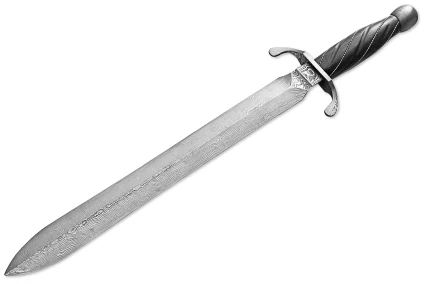
Shortswords are about as close to scimitars as you can get without picking one up.
They do piercing damage instead of slashing damage, weigh 2 pounds less, and cost 10 gold pieces less, but other than that, they are the same.
This is a good choice for rogues because they are good with shortswords but not with scimitars.
Rapier
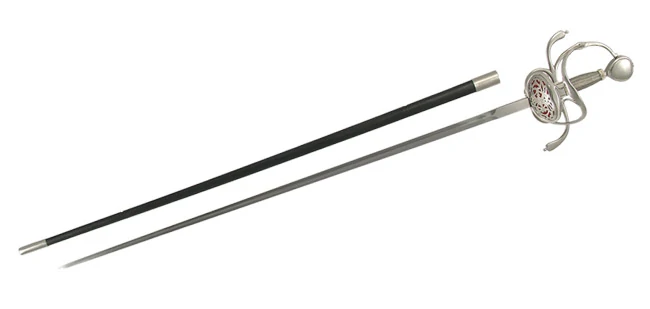
Like shortswords, rapiers are a good weapon for rogues, and you’ll often see them using them.
The rapier is a good alternative to the scimitar because it does more damage (1d8 piercing) and has the same “finesse” property.
It isn’t light, so if you want to use it with two hands, you’ll need the Dual Wielder feat.
Handaxe
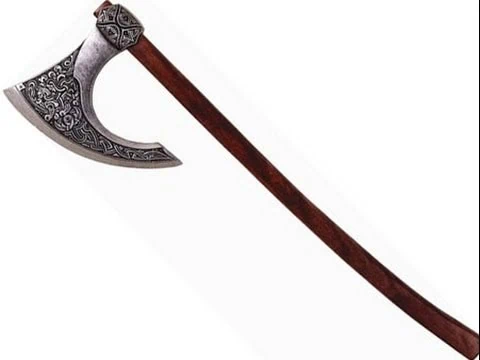
The simple handaxe is often overlooked, but it can be a great alternative to the scimitar for any build that doesn’t depend on dexterity. It does the same amount of damage (1d6 slashing), is simple, light, and can be thrown.
The only thing it doesn’t have is the finesse property, so it can only be used by people with a lot of strength.
Dagger
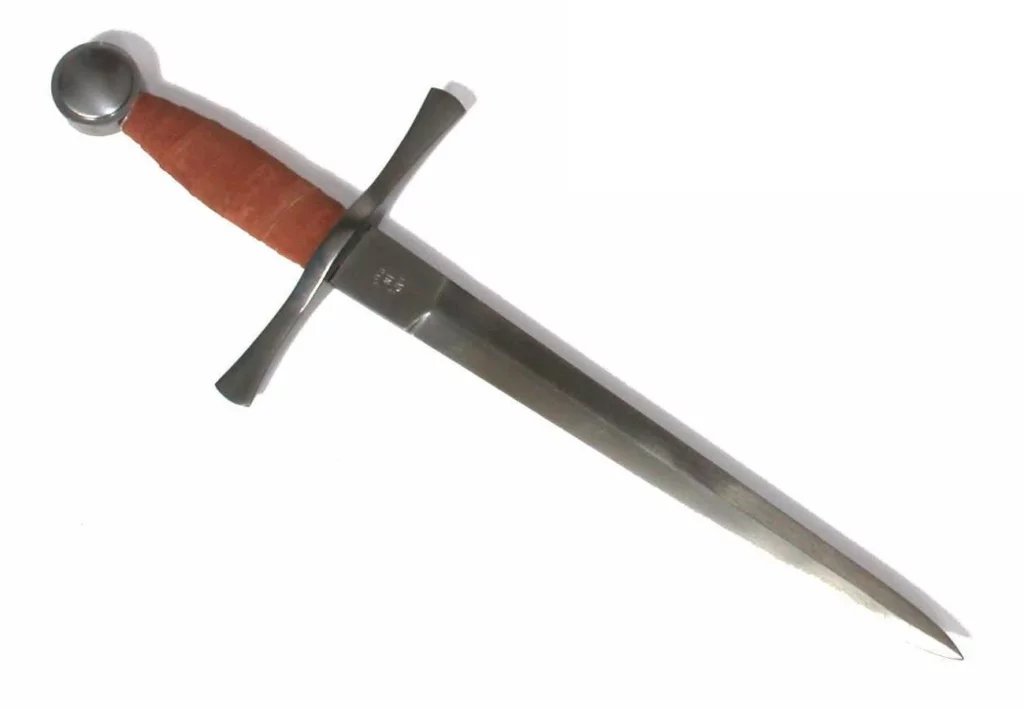
The dagger doesn’t do much damage: it only pierces 1d4 times. But it’s a simple weapon, so you can use it even if you don’t know much about fighting.
It is also light, has the finesse property, and can be thrown, making it a useful weapon overall. Again, rogues like this weapon because they can make up for its low damage with sneak attacks.
FAQs
Is a scimitar a simple weapon?
No, a scimitar is considered a martial weapon because it takes special training to use it well.
DOES A SCIMITAR USE STRENGTH OR DEXTERITY?
No matter which one you choose! Because of its finesse property, you can use either your strength or dexterity modifier to roll for attack and damage. The only rule to remember is that both rolls must use the same modifier.
WHY CAN DRUIDS USE SCIMITARS?
This is a good question with a lot of history behind it. Druids weren’t their own class in the early versions of Dungeons & Dragons. Instead, they were a subclass of clerics. Old-school D&D was made so that clerics couldn’t easily use weapons that cut. Druids were given the scimitar to make them stand out from other clerics.
Because of ancient Ireland and celtic mythology, sickles are often seen as the most important weapon for druids. It was decided to keep with this theme and let the druid use “swords in the shape of a crescent moon.” Later, this definition was changed to just “Scimitars,” and druids have kept this skill ever since.

